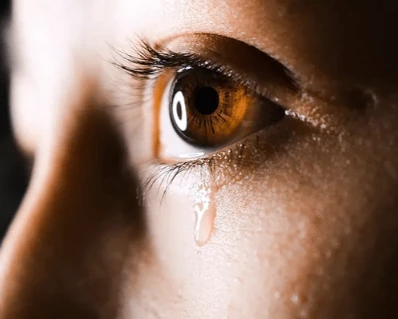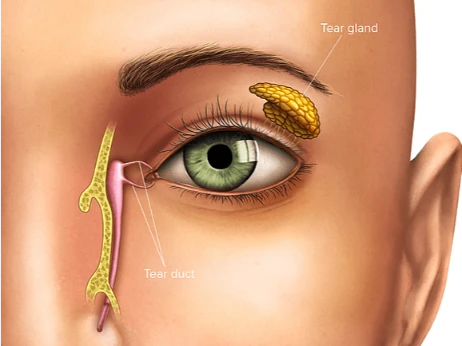Most patients who present with watery eyes actually suffer from reflex tearing as a result of dry eye. When the eye surface gets too dry, the brain sends signals to the lacrimal gland to produce excess tears to combat the dryness. Since the drainage system is already narrow in most patients who have dry eyes, the tears start to overflow and drip down the face. Apart from this cause, watery eyes could be related to a blocked tear duct or even eyelid malposition.
If we follow the pathway of the tear duct, the blockage could happen anyway along that duct. Firstly, the blockage could be at the level of the punctum, which is, as we before mentioned, the beginning of the tear duct on the eyelid. It could get blocked because of chronic inflammation of the eyelid margin or even because of dry eyes and a lack of tears running down the streamline of the tear duct to keep it unobstructed. In other cases, the blockage could be more distal, meaning it could begin at the inferior part of the tear duct as it opens inside the nose.
The treatment depends on the cause of your watery eye:
If the blockage is in the tear duct, it doesn’t usually unblock itself; however, in cases of watery eyes due to reflex tearing from dry eyes, the tearing might stop if the eye lubrication gets better.
Surgery depends on the patient’s symptoms and willingness to treat the problem. Both punctum surgery and DCR surgery have high success rates.
In the case of punctum surgery, which is a minor procedure, the recovery is very fast and you can usually go back to normal day-to-day activities the next day. You might notice small bruising on the inside of the lower lid. DCR surgery, on the other hand, is major surgery and involves breaking bones on the side of the nose to overcome the blockage and creating a new passageway for the tears to drain normally. This may result in needing skin sutures (stitches) on the side of the nose and a tube that connects the punctum, which starts at the beginning of the tear duct to the nasal cavity. Following DCR surgery, you should expect bruising around the eye that might last for a couple of weeks. A tamponade would also need to be inserted into your nose but that could be taken out the day after surgery. The skin sutures are usually removed one week after the surgery and the tube could be taken out in one month. If you are experiencing any of the symptoms mentioned in this article and would like to see a specialist, visit Mr Radwan Almousa’s Top Doctors profile and book an appointment to see him.


